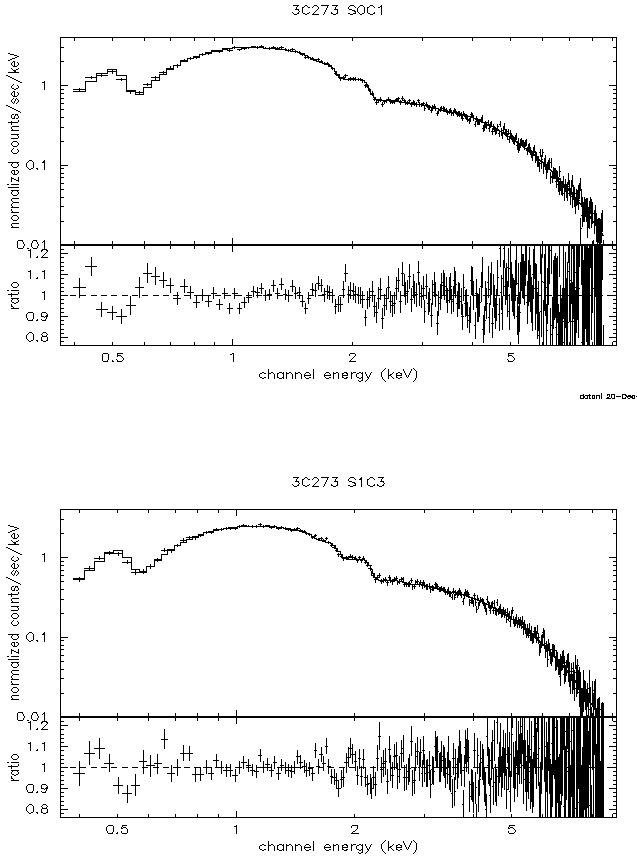Limitations of the current SIS calibration
Since SIS cannot directly observe the Crab nebula, spectral calibration of the SIS is based on:
- Our understanding of the instrument, from the design specification and the ground calibration.
- Observations of 3C273.
 3C273 data, the best-fit model, and the residuals (plotted
as ratio of data/model) using the current calibration of the SIS.
3C273 data, the best-fit model, and the residuals (plotted
as ratio of data/model) using the current calibration of the SIS.
It has been reported that SIS spectra of a wide variety of objects (AGN, stars) consistently show flux deficit at around 0.5 keV. The above figure shows this is likely to be a calibration problem. (This is separate from a more general problem resulting in an overestimate of Nh, by about 3e20, in SIS spectral fits.)
There is a new XRT response that includes energy-dependence of the point spread function, currently being checked out by ASCA team members. This is being used to refine the GIS calibration. When this is complete, the SIS team will use the new XRT response and repeat the cross-calibration of the SIS and the GIS, using the new GIS response. At the same time, particular attention will be paid to possible energy scale offsets, and the possible presence of a soft excess in the 3C273 calibration data within the SIS band. It is hoped that the results of this new calibration will become available by mid-1996.
If you have any questions concerning ASCA, visit our Feedback form.

